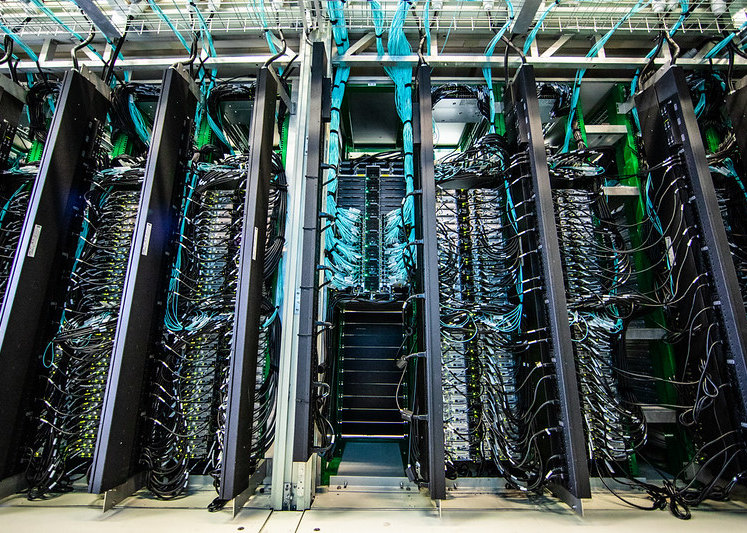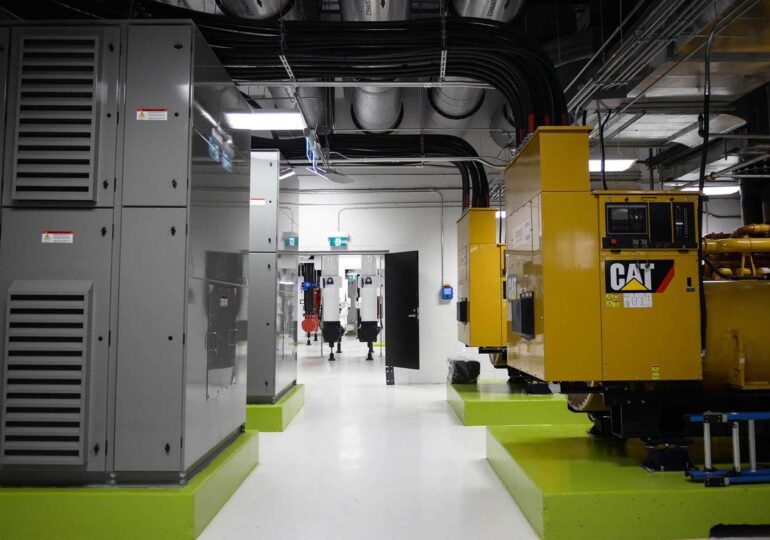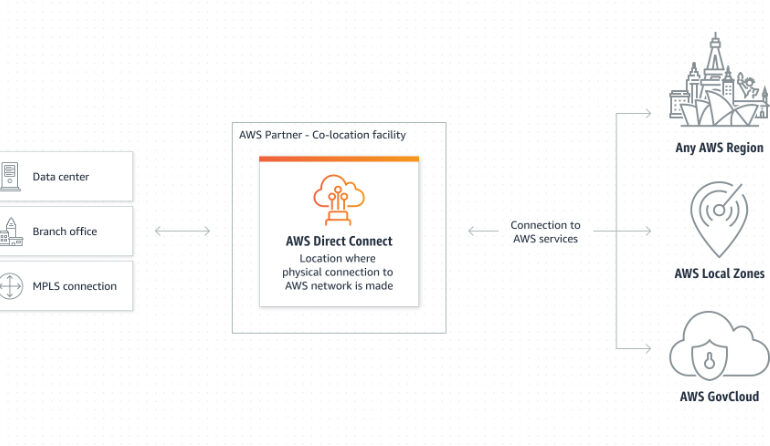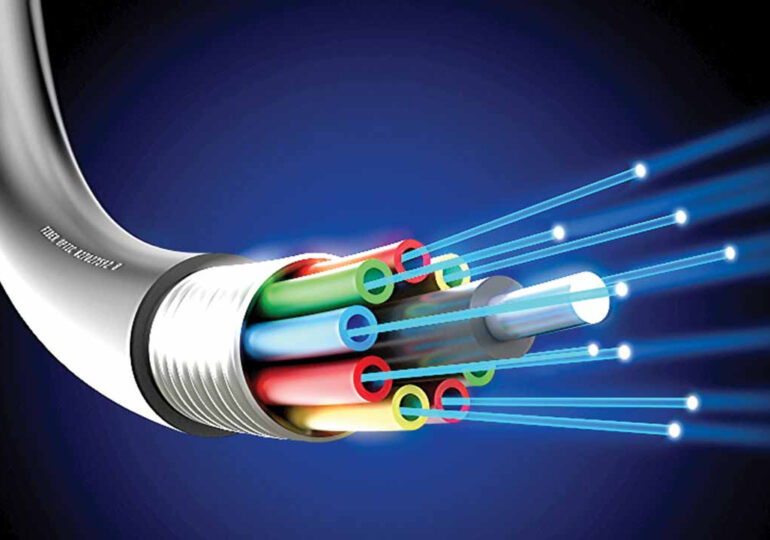Why Data Network Connectivity is important when choosing a Data Centre

In today’s digital era, businesses rely heavily on data centres to store, manage, and process their ever-growing data. However, choosing the right data centre goes beyond just physical infrastructure and security measures. One crucial aspect that businesses often overlook is data network connectivity.
Data network connectivity refers to the interconnection between the data centre and the outside world, including the Internet, other data centres, and cloud service providers. It plays a vital role in ensuring seamless and uninterrupted data transfer, enabling businesses to stay connected with their customers and stakeholders.
In this article we will look at the key points:
- The role of Data Network Connectivity in a Data Centre
- Benefits of choosing a data centre with reliable data network connectivity
- Factors to consider when evaluating data network connectivity options
- Understanding different types of data network connectivity technologies
- Best practices for ensuring robust data network connectivity in a data centre
- Common challenges and solutions in data network connectivity
- Importance of redundancy and failover in data network connectivity
- Evaluating data centre providers based on their data network connectivity capabilities
The role of Data Network Connectivity in a Data Centre
Data network connectivity forms the backbone of a data centre’s operations. It is the conduit through which data flows, allowing businesses to access their data, communicate with their customers, and connect with other service providers. Without reliable data network connectivity, a data centre’s infrastructure and security measures would be rendered useless.
A robust and high-speed network infrastructure ensures faster data transmission, lower latency, and minimal downtime, all of which are vital for smooth business operations. For example, in industries such as e-commerce and finance, where real-time data processing is critical, a data centre with low latency network connectivity is essential to provide an optimal user experience.
Furthermore, data network connectivity plays a crucial role in supporting data replication and backup processes. Many businesses rely on data centres for disaster recovery, and a reliable network connection ensures that data can be replicated and synchronized between multiple locations seamlessly.
In summary, data network connectivity is the lifeline of a data centre, enabling businesses to stay connected, access their data, and ensure the smooth functioning of their critical operations.
Benefits of choosing a data centre with reliable data network connectivity
When selecting a data centre, it is crucial to consider the quality and reliability of its data network connectivity. Choosing a data centre with reliable connectivity offers several benefits for businesses:
- Seamless data transfer: Reliable data network connectivity ensures that data can be transferred between the data centre and external networks quickly and without interruptions. This is particularly important for businesses that rely on real-time data updates or large-scale data transfers.
- Improved performance: A data centre with high-speed network connectivity reduces latency and provides faster data transmission, leading to improved performance for applications and services hosted within the data centre. This can result in better user experiences, increased productivity, and higher customer satisfaction.
- Reduced downtime: Downtime can be detrimental to businesses, resulting in lost revenue, damaged reputation, and frustrated customers. A data centre with robust network connectivity minimizes the risk of downtime by ensuring redundant connections and failover mechanisms are in place.
- Enhanced scalability: As businesses grow, their data needs also increase. Choosing a data centre with scalable network connectivity allows businesses to expand their operations without worrying about network limitations. Scalable connectivity ensures that businesses can meet their evolving data demands and support future growth.
By selecting a data centre with reliable data network connectivity, businesses can enjoy these benefits and ensure the smooth functioning of their critical operations.
Factors to consider when evaluating data network connectivity options
When evaluating data centre providers, it is essential to consider various factors related to their data network connectivity. These factors can help businesses make an informed decision and choose a provider that meets their specific requirements:
- Network infrastructure: Assess the provider’s network infrastructure, including the type and quality of network equipment, bandwidth capacity, and redundancy measures. A robust network infrastructure ensures reliable connectivity and minimizes the risk of bottlenecks or service disruptions.
- Network uptime: Look for providers that offer guaranteed network uptime and have a track record of meeting their service level agreements (SLAs). Network uptime is a critical indicator of a provider’s commitment to providing reliable connectivity.
- Geographical reach: Consider the provider’s geographical reach and the availability of diverse network connections. Having multiple points of presence (PoPs) and connectivity options allows businesses to optimize network performance and ensure redundancy.
- Carrier-neutral connectivity: A carrier-neutral data centre allows businesses to choose from multiple telecom carriers and service providers, ensuring flexibility and the ability to negotiate competitive pricing. Carrier diversity also provides redundancy in case of a carrier outage.
- Data transfer costs: Evaluate the provider’s data transfer costs, especially if your business deals with significant data volumes or requires frequent data transfers. High data transfer costs can significantly impact your overall expenses, so it’s important to consider this aspect.
By considering these factors, businesses can assess the data network connectivity options offered by various providers and choose the one that aligns with their specific requirements and budget.
Understanding different types of data network connectivity technologies
Data network connectivity options can vary based on the technology used to establish the connection. It is essential to understand the different types of connectivity technologies to make an informed decision:
- Fiber optic connectivity: Fiber optic cables provide high-speed data transmission over long distances and offer low latency. They are known for their reliability and bandwidth capabilities, making them an excellent choice for businesses that require high-performance connectivity.
- Ethernet connectivity: Ethernet connectivity uses Ethernet cables to establish network connections. It is a widely adopted technology and offers scalability, flexibility, and cost-effectiveness. Ethernet connectivity is suitable for businesses with varying bandwidth needs.
- Internet Protocol (IP) connectivity: IP connectivity enables businesses to connect to the internet and other IP-based networks. It is a fundamental technology for accessing online services, communicating with external networks, and transferring data.
- Virtual Private Network (VPN) connectivity: VPN connectivity allows businesses to create secure and encrypted connections over public networks, such as the internet. It ensures data privacy and enables remote access to corporate networks.
Understanding these connectivity technologies can help businesses choose the most suitable option based on their specific requirements, budget, and performance needs.
Best practices for ensuring robust data network connectivity in a data centre
To ensure robust data network connectivity in a data centre, businesses can follow these best practices:
- Redundancy and failover: Implement redundant network connections and failover mechanisms to minimize the risk of service disruptions. This can include multiple internet service providers (ISPs), diverse network paths, and automatic failover between connections.
- Performance monitoring: Regularly monitor network performance to identify any bottlenecks, latency issues, or abnormalities. This allows businesses to proactively address any issues and optimize network performance.
- Quality of Service (QoS) management: Implement QoS management techniques to prioritize critical data traffic and ensure optimal performance for essential applications and services. This helps businesses maintain consistent network performance even during peak usage periods.
- Regular network audits: Conduct regular network audits to evaluate the effectiveness of network connectivity and identify any areas for improvement. Audits can help businesses optimize network performance, identify potential vulnerabilities, and plan for future scalability.
By following these best practices, businesses can ensure that their data centre’s network connectivity is robust, reliable, and capable of meeting their specific needs.
Common challenges and solutions in data network connectivity
While data network connectivity is crucial for data centres, it is not without its challenges. Some common challenges businesses may face include:
- Bandwidth limitations: As data volumes increase, businesses may face bandwidth limitations, leading to slower data transfer speeds and reduced performance. Upgrading network infrastructure or considering higher bandwidth options can help overcome this challenge.
- Network congestion: In shared network environments, network congestion can occur when multiple users or businesses compete for limited resources. Implementing traffic management and load balancing techniques can help alleviate congestion and ensure fair resource allocation.
- Security vulnerabilities: Network connectivity can introduce security vulnerabilities, such as unauthorized access or data breaches. Implementing robust security measures, including firewalls, encryption, and secure access controls, can help protect against these threats.
- Interoperability issues: In complex network environments, businesses may face interoperability issues when connecting different systems or networks. Working with experienced network engineers and ensuring compatibility between systems can help overcome these challenges.
By being aware of these challenges and implementing suitable solutions, businesses can minimize the impact on their data centre’s network connectivity and maintain optimal performance and security.
Importance of redundancy and failover in data network connectivity
Redundancy and failover mechanisms are essential components of data network connectivity. They ensure that businesses have backup options in case of primary network failures, minimizing the risk of service disruptions and downtime.
Implementing redundancy can involve multiple approaches, such as:
- Multiple ISPs: Connecting to multiple internet service providers (ISPs) ensures that businesses have alternate paths for network connectivity. This reduces the dependency on a single ISP and provides redundancy in case of ISP outages or performance issues.
- Diverse network paths: Establishing diverse network paths, either through physical connections or virtual private networks (VPNs), helps ensure that network traffic can be rerouted in case of failures or congestion in primary paths.
- Automatic failover: Implementing automatic failover mechanisms allows businesses to switch to backup network connections seamlessly. This ensures minimal disruption to critical operations and provides continuous network connectivity.
By incorporating redundancy and failover mechanisms, businesses can enhance the resilience and reliability of their data network connectivity, reducing the risk of downtime and maintaining uninterrupted operations.
Evaluating data centre providers based on their data network connectivity capabilities
When choosing a data centre provider, it is essential to evaluate their data network connectivity capabilities to ensure they can meet your business requirements. Consider the following factors when assessing providers:
- Network infrastructure: Evaluate the provider’s network infrastructure, including their network equipment, bandwidth capacity, and redundancy measures. A robust network infrastructure ensures reliable connectivity and high-performance data transfer.
- Carrier diversity: Assess the provider’s carrier diversity, which refers to the availability of multiple telecom carriers and service providers within the data centre. Carrier diversity provides redundancy and flexibility in choosing connectivity options.
- SLAs and uptime guarantees: Review the provider’s service level agreements (SLAs) and network uptime guarantees. Ensure that they align with your business requirements and that the provider has a proven track record of meeting these commitments.
- Network monitoring and support: Inquire about the provider’s network monitoring and support capabilities. It is crucial to choose a provider that offers proactive monitoring, timely issue resolution, and 24/7 technical support to address any network-related concerns.
- Scalability options: Consider the provider’s scalability options for network connectivity. As your business grows, you may need to increase bandwidth or establish additional connections. Ensuring that the provider can accommodate these changes is essential for long-term scalability.
By carefully evaluating data centre providers based on these connectivity capabilities, businesses can choose a provider that can support their current and future network connectivity needs effectively.
Conclusion: The impact of data network connectivity on data centre performance and reliability
Data network connectivity plays a significant role in the performance and reliability of a data centre. It is the lifeline that enables businesses to stay connected, access their data, and ensure seamless data transfer with external networks.
Choosing a data centre with reliable data network connectivity offers several benefits, including seamless data transfer, improved performance, reduced downtime, and enhanced scalability. By considering factors such as network infrastructure, uptime guarantees, and carrier diversity, businesses can make informed decisions when evaluating data centre providers.
Implementing best practices for robust network connectivity, understanding different connectivity technologies, and addressing common challenges can further enhance the reliability and performance of a data centre’s network connectivity.
In conclusion, data network connectivity should be a critical consideration when choosing a data centre. It is an essential factor that can significantly impact the efficiency, productivity, and success of businesses in today’s digital landscape. By prioritizing reliable connectivity, businesses can ensure that their data centre operations run smoothly, enabling them to focus on their core competencies and drive growth.



































